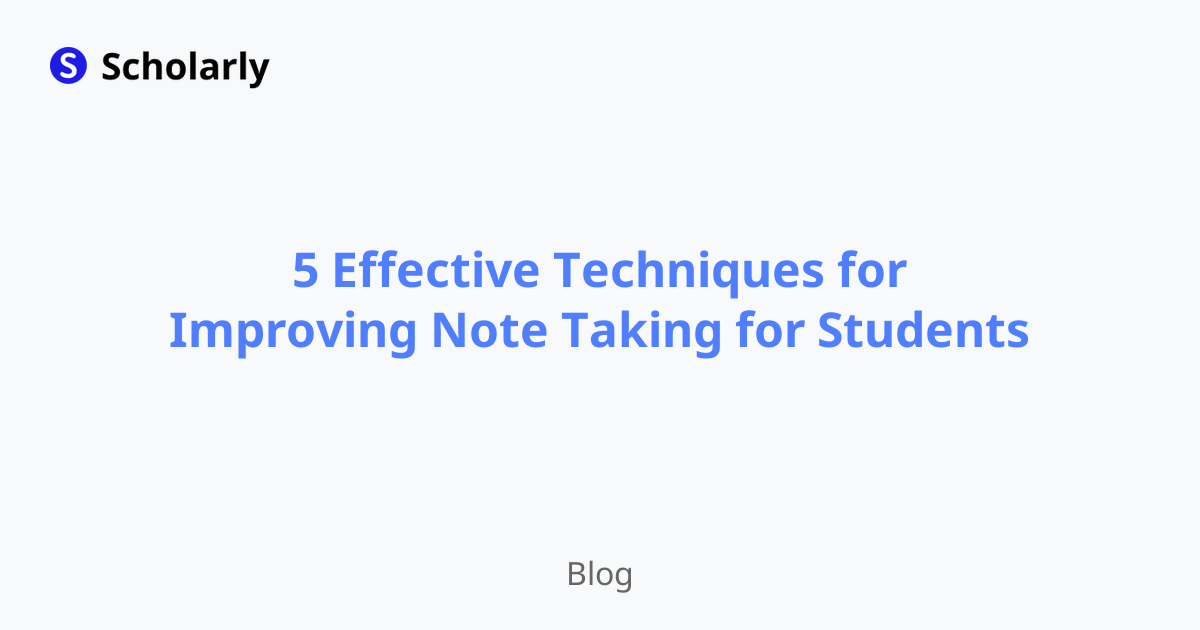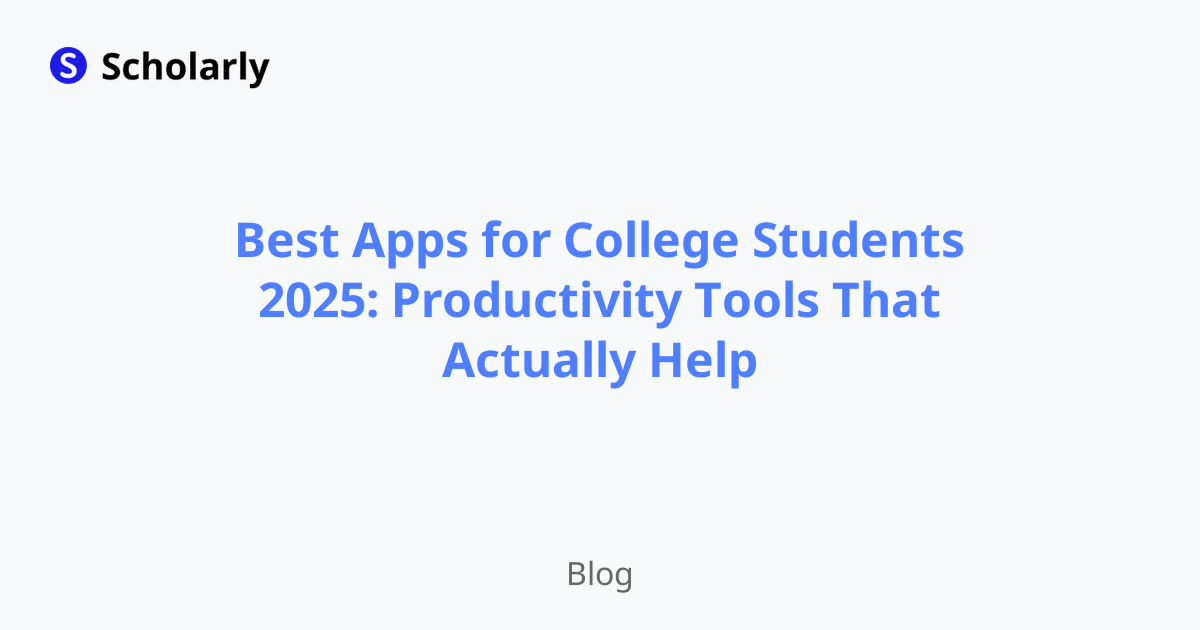5 Effective Techniques for Improving Note Taking for Students
Your notes look like hieroglyphics and you can't remember what any of it means? These 5 techniques will transform your note-taking from chaotic scribbles into actual learning tools.

Let's be honest about your current note-taking situation: You frantically write down everything your professor says, creating pages of illegible chicken scratch that you'll stare at later with the same confusion you'd have reading ancient Sanskrit. Then exam time comes, and these "notes" are about as helpful as a chocolate teapot.
Sound familiar? You're definitely not alone. Most students were never actually taught how to take notes effectively - they just wing it and hope for the best. But here's the thing: good note-taking isn't about capturing every word your professor utters. It's about creating a system that helps you understand, remember, and actually use the information later.
1. Active Listening: Your Brain as a Filter, Not a Copy Machine
The Problem: Most students think their job is to be a human dictation service, frantically writing down everything they hear.
The Solution: Your brain should be a smart filter, not a mindless copy machine.
How to Actually Listen:
- Sit strategically: Front and center means fewer distractions and better professor interaction
- Focus on concepts, not quotes: Ask yourself "What's the main idea here?" instead of "Did I get that word right?"
- Engage actively: Ask questions during class - it helps you understand AND shows your professor you're paying attention
- Listen for patterns: Professors often use signal phrases like "The important thing is..." or "This will be on the exam..."
Reality Check: If you're writing so much that you can't think about what's being said, you're doing it wrong.
2. Structure Your Notes Like Your Brain Actually Works
The Cornell Method (But Make It College-Friendly):
- Main notes section: Key concepts and explanations (not every word the professor says)
- Cue column: Questions you have, things to follow up on, connections to other topics
- Summary section: The "so what?" - why this matters and how it connects to the big picture
The Outline Method (For When Your Professor Actually Follows a Logical Structure):
- Main topics → subtopics → supporting details
- Use consistent indentation so you can see relationships at a glance
- Leave white space - your notes don't need to look like a novel
Pro Tip: Don't get too attached to perfect formatting during class. Focus on capturing ideas, clean it up later.
3. Make Your Notes Visual (Your Brain Will Thank You)
Why Visuals Work: Your brain processes visual information 60,000 times faster than text. Use this to your advantage.
Simple Visual Techniques:
- Arrows and connections: Show how ideas relate to each other
- Simple drawings: Even terrible stick figures help you remember processes
- Color coding: Different colors for different types of information (definitions, examples, important concepts)
- Mind maps: Great for brainstorming sessions or complex topics with lots of connections
The Reality: You don't need to be an artist. Simple boxes, arrows, and basic shapes can make your notes 10x more memorable.
Time-Saver: Don't worry about making it pretty during class. Scribble now, make it visual during review.
4. The "24-Hour Magic Window" Review System
The Science: You forget 50% of new information within 24 hours unless you actively review it.
Your Review Action Plan:
- Within 24 hours: Quick scan to fill in gaps and clarify confusing parts while it's still fresh
- After 1 week: More thorough review - connect to previous topics, identify what you still don't understand
- Before exams: Use your notes to create active study materials (flashcards, practice questions, etc.)
The Consolidation Trick: After each class, write a 2-3 sentence summary of the main points. If you can't do this, you probably missed something important.
Connection Building: Always ask "How does this relate to what we learned last week?" Your brain loves patterns and connections.
5. AI-Powered Note Enhancement (The Game Changer)
The Old Way: Spend hours after class rewriting and organizing messy notes.
The Smart Way: Let AI do the heavy lifting while you focus on understanding.
How Smart Students Use Technology:
- Digital note-taking: Apps like Notion or Obsidian for searchable, linkable notes
- Voice recording: Record lectures (with permission) for later review of confusing parts
- AI enhancement: Upload your raw notes to get organized summaries, flashcards, and study materials automatically
- Cross-device sync: Access your notes anywhere - study on your phone during lunch breaks
The Reality: Technology should enhance your learning, not complicate it. If an app takes longer to use than pen and paper, skip it.
Pro Strategy: Use AI to transform your basic notes into comprehensive study materials - summaries, flashcards, and practice questions all generated from your actual class content.
The Note-Taking Reality Check
Here's what successful students know: the best note-taking system is the one you'll actually use consistently. You can have the most sophisticated method in the world, but if it's too complicated to maintain, you'll abandon it by week 3.
Your Action Plan:
- Start simple: Pick one technique from this list and master it before adding others
- Experiment: Try different methods for different classes - what works for history might not work for chemistry
- Focus on understanding: Notes are a means to an end (learning), not the end itself
- Use technology wisely: Let AI handle the busy work so you can focus on comprehension
Ready to Transform Your Learning?
Stop treating note-taking like a chore and start treating it like a learning strategy. The students who succeed aren't necessarily the ones with the most notes - they're the ones whose notes actually help them learn.
Try Scholarly free for 7 days and discover how AI can turn your class notes into powerful learning systems that actually help you remember what you study.
Your future self (the one acing exams) will thank you.
Try Our Popular AI Study Tools
Transform your study materials into interactive learning experiences with our most popular AI-powered tools:
PDF to Flashcards
Convert lecture notes and textbooks into study flashcards instantly
Text to Flashcards
Turn any text or notes into comprehensive flashcard sets
Image to Flashcards
Convert diagrams and handwritten notes into digital flashcards
YouTube to Flashcards
Generate flashcards from educational video content



